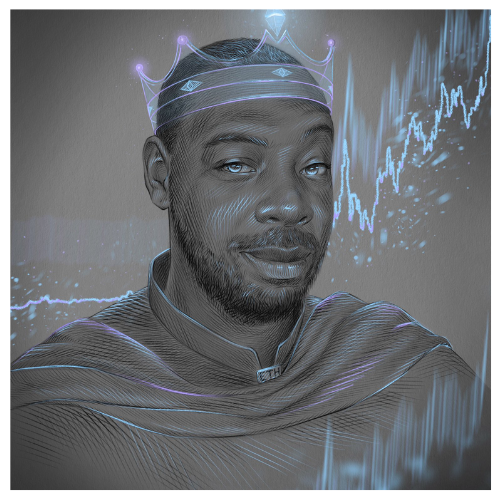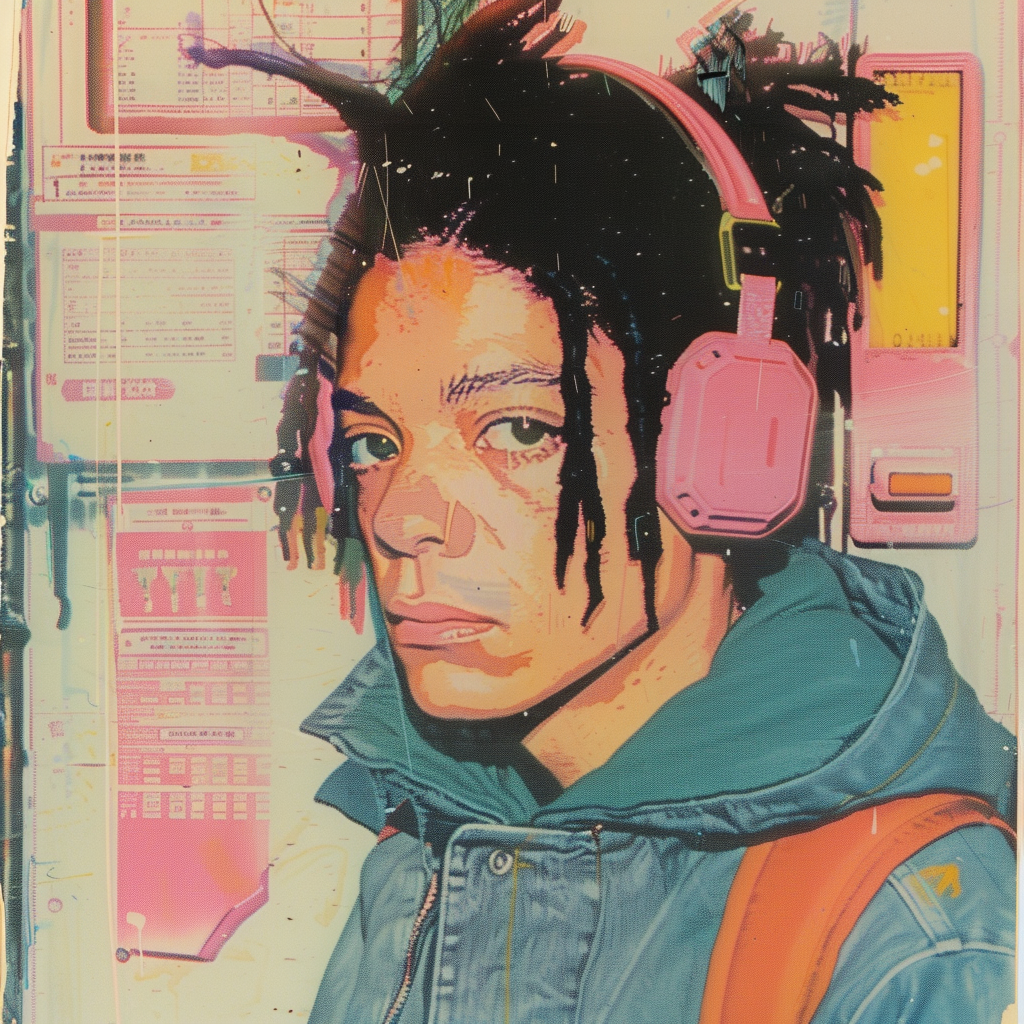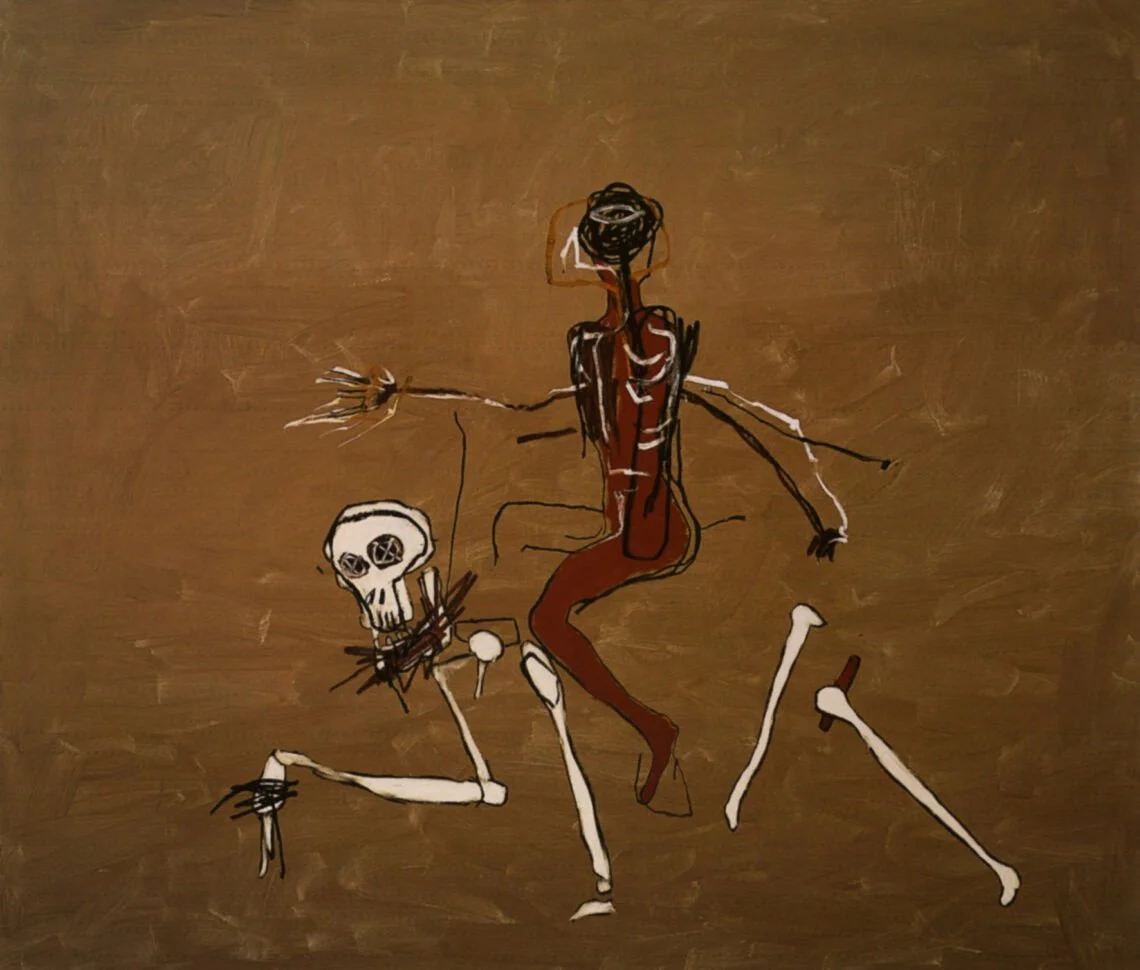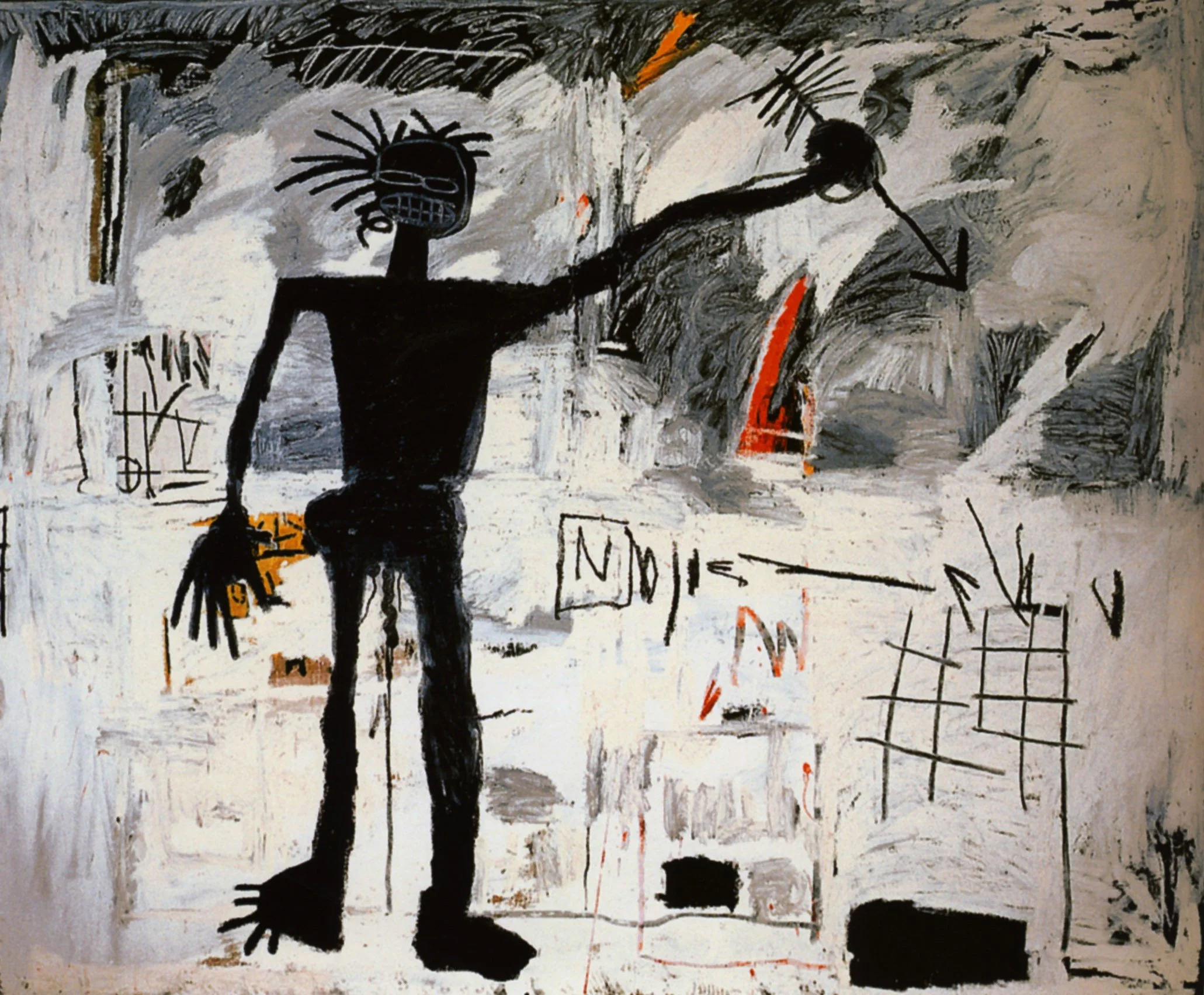Warrior’s Tale: Jean-Michel Basquiat
Jean-Michel Basquiat: The Meteoric Life of a Warrior Artist
Greetings Warriors!
Some artists are born to quietly paint in solitude. Others are born to set the world on fire. Jean-Michel Basquiat was the latter — a Haitian and Puerto Rican American kid from Brooklyn who rose from the chaos of the streets to redefine what art could be.
By the time he was in his twenties, Basquiat’s work hung next to Warhol, sold for six and seven figures, and reshaped galleries that had barely opened their doors to Black artists before him. His raw, frenetic style — words, symbols, skeletons, kings, and crowns — screamed truth onto canvas.
But here’s the thing about meteors: they burn bright, they move fast, and they don’t last forever.
Basquiat’s story isn’t just about art. It’s about the price of genius, the weight of culture, and the fight to be seen in a world that too often looks the other way.
Jean-Michel Basquiat, Untitled - 1982
BUY MY ART🖤
Brooklyn Beginnings and a Warrior’s Bloodline
Jean-Michel Basquiat was born on December 22, 1960 in Brooklyn, New York. His roots ran deep — Haitian father, Puerto Rican mother. That mix of cultures, languages, and histories shaped him from day one.
He wasn’t raised in one of those cliché “starving artist” homes. His father, Gérard, was an accountant; his mother, Matilde, loved art and filled the house with sketchbooks and museum trips. It was Matilde who first took him to the Museum of Modern Art (MoMA), planting seeds that would bloom later in unexpected, explosive ways.
But like many warriors, Basquiat’s path wasn’t smooth. His parents’ marriage fractured. At times, his mother battled mental health struggles and was institutionalized. By age 15, Basquiat had dropped out of high school and left home, couch-hopping and crashing wherever he could.
He wasn’t a kid with a plan. He was a kid with a fire in his hands — and he used that fire to write his name on the city.
Jean-Michel Basquiat, Riding With Death - 1988
SAMO: Graffiti Prophet of Downtown NYC
Before he was “Jean-Michel Basquiat,” the art-world star, he was just SAMO.
That was the graffiti tag he used with his friend Al Diaz, spraying cryptic, biting phrases on lower Manhattan walls in the late 1970s. SAMO stood for “Same Old Sh*t” — a commentary on everything from consumerism to politics.
The messages weren’t just graffiti; they were poetry bombs dropped across SoHo and the East Village:
“SAMO as an end to mindwash religion.”
“SAMO as an end to bogus pseudo-intellectualism.”
The art scene noticed. The streets were listening. SAMO wasn’t just vandalizing; SAMO was prophesying.
By 1980, Basquiat “killed” SAMO by writing “SAMO IS DEAD” across walls, ready to evolve into something bigger. He’d move from brick to canvas — but he’d keep that raw, street-born energy forever.
From Streets to Stardom
The art world can smell authenticity — and they could smell Basquiat.
He started showing up at clubs like the Mudd Club and CBGB, selling hand-painted postcards and T-shirts to punks and musicians. He even appeared on a 1979 episode of TV Party, a cult cable show that was basically an open mic for New York’s creative underground.
In 1980, he participated in the landmark “Times Square Show,” which brought together street artists, graffiti writers, and punks in one gritty, electric exhibition. Basquiat’s canvases — frenetic, colorful, full of words, skeletons, and crowns — were unlike anything anyone had seen.
By 1981, art critic René Ricard wrote the now-famous Artforum piece, “The Radiant Child,” declaring Basquiat a genius. Collectors started buying. Galleries started calling. The kid who had once sprayed walls with cryptic messages was now being courted by the same galleries he used to mock.
And he was just getting started.
Jean-Michel Basquiat, Warrior - 1982
The Crown, The Fame, and The Weight
Basquiat’s signature crown started appearing everywhere in his paintings — a three-pointed halo he used to anoint heroes, saints, and himself. It was his way of saying: Black men are kings too.
His work tackled everything — race, history, poverty, jazz, colonialism, police violence — but it wasn’t academic. It was urgent, raw, like notes scrawled on a wall during a storm.
By 1982, he was in shows with Andy Warhol, Keith Haring, David Salle. He was the youngest artist ever to exhibit at Documenta in Germany. By 1983, he and Warhol had become collaborators — and tabloid fodder. Some critics claimed Warhol was using Basquiat. Others whispered that Basquiat was using Warhol. The truth? Two giants were orbiting each other, feeding off each other’s energy, and the art world was watching every second.
But fame came with a cost. Basquiat was making millions, but he felt trapped in a system that loved his “wildness” but didn’t always see him. He hated being called a “primitive,” hated that some collectors treated him like an exotic pet instead of a genius.
The crown was heavy. And Basquiat was starting to buckle under its weight.
BUY MY ART🖤
Jean-Michel Basquiat, Hollywood Africans- 1983
The Fall of a Meteor
By the mid-1980s, Basquiat was rich, famous, and in pain.
He was working constantly, producing hundreds of paintings — but he was also spiraling into heroin addiction. The same fire that fueled his art was burning him alive.
In 1987, Andy Warhol — his friend, collaborator, and, in many ways, protector — died unexpectedly. Basquiat was devastated. The loss shook him, and his drug use worsened.
On August 12, 1988, Jean-Michel Basquiat was found dead in his Manhattan loft. He was 27 years old.
Like Jimi Hendrix, Janis Joplin, and Kurt Cobain, Basquiat became part of the “27 Club” — a tragic shorthand for artists who lived fast, burned bright, and left too soon.
But even in death, his light didn’t fade. It exploded.
Jean-Michel Basquiat, Irony Of Negro Policeman - 1981
Legacy of the Crown
Today, Jean-Michel Basquiat’s art sells for hundreds of millions. In 2017, his untitled skull painting shattered records when it sold for $110.5 million — the highest price ever paid for an American artist at auction.
But his legacy isn’t just about price tags.
Basquiat opened doors. He kicked down walls. He brought the streets into the galleries and made them stay there. He took the crown and put it on his own head, then left it there for others to claim.
His paintings still shout. They still scratch at the walls of museums, daring you to look deeper. His symbols — the crown, the skulls, the chaotic scrawl — have become universal.
But maybe the greatest legacy is this: Basquiat proved you could come from nothing, tag your name on the city, and change the art world forever.
For every young artist, for every kid who feels unseen, Basquiat’s story says: Your voice matters. Your art matters. And yes — you deserve the crown too.
Jean-Michel Basquiat, Self Portrait- 1982
Renaissance Man - Inspired by Leonardo Da Vinci
Drop a comment below:
And if this article hit you right in the soul, do what warriors do—share it, retweet it, spread it. Let’s keep art, passion, and legacy alive.
Stay bold. Stay curious. Stay creating.
theromuluskingdom.com
















